It features three electric motors, 1,800 horsepower, and watch-like instruments.
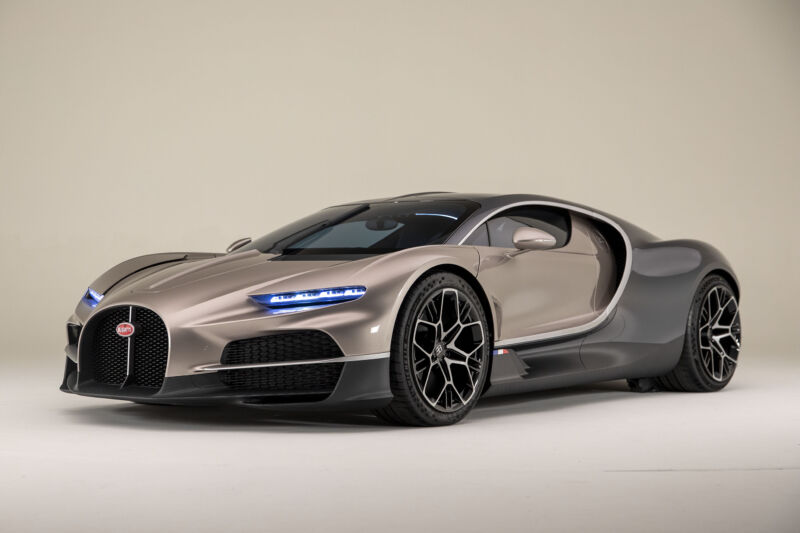
Since the launch of the hypercar-defining Veyron back in 2005, modern Bugattis have served as benchmarks for straight-line performance and no-expense-spared automotive engineering. At a time when a 300 horsepower Mustang GT was something to crow about, the quad-turbocharged, W16-powered Veyron offered more than a thousand, metric (987 hp/736 kW).
Perhaps more importantly, and in contrast to most other world-beating performance cars, the Veyron wasn’t presented as some skunkworks project that had been pushed to the ragged edge. Instead, it was a wholly realized ultra-luxury performance machine, replete with the sort of grand touring appointments you’d expect to find in a Bentley rather than a top-speed record holder.
Still, it was the numbers that instantly captivated enthusiasts and casual onlookers alike, and Bugatti would go on to reset the bar with the introduction of the 1,479 hp (1,102 kW) Chiron in 2016.
- Bugatti concentrated on achieving a lower frontal area and roofline with the Tourbillon. Bradley Iger
- The Tourbillon’s oval-ish profile forms a similar shape to that of a bird of prey. Bradley Iger
- The curve around the door opening is called the Bugatti line. Bradley Iger
- Getting cooling air into the car remains an important priority Bradley Iger
- A large rear diffuser generates important downforce at speed. Bradley Iger
- In case there was any doubt, the taillights spell it out. Bradley Iger
- Bugatti
- Bugatti
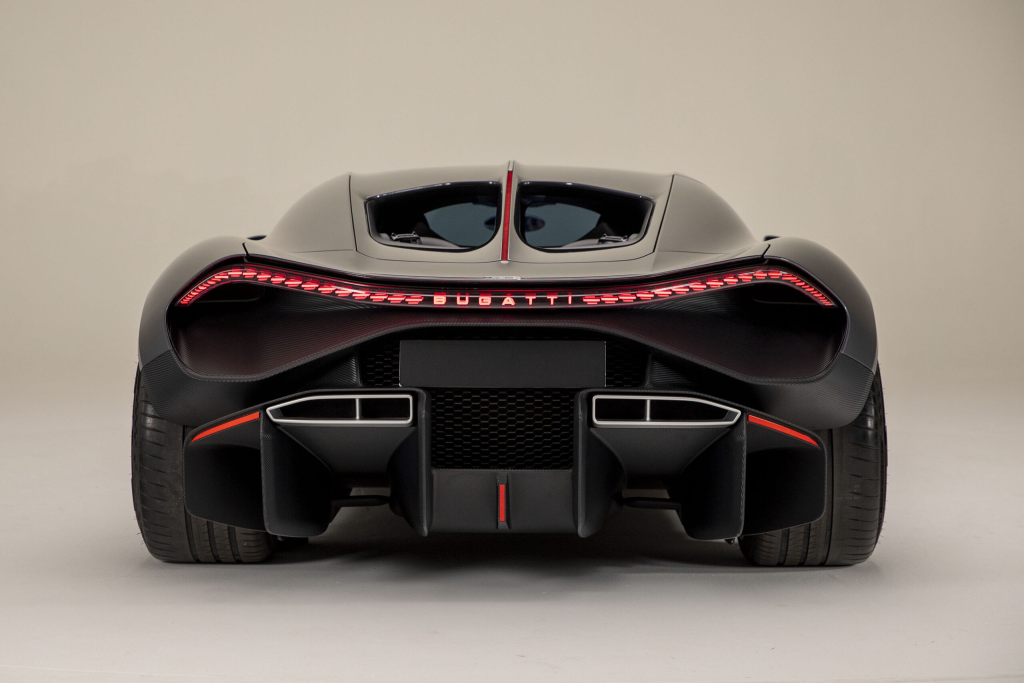

A Bugatti needs to be more than just fast
But now, less than a decade later, the landscape of automotive performance looks markedly different. Thanks to Rimac—which incidentally now has a controlling interest in Bugatti—those with the means can roll out of a showroom driving a street-legal vehicle that’s capable of out-accelerating a Formula One car, while other manufacturers are offering rather inconspicuous luxury sedans with more than 1,200 hp (895 kW).Advertisement
Today, buyers can choose from dozens of different vehicles that are capable of blasting to 60 mph from a standstill in less than three seconds. As a result, there’s a growing sense that we’re living in a post-horsepower world, and Bugatti seems to be well-aware of this paradigm shift.
“I think we’ve reached a point where cars are so incredibly fast that it’s not the differentiator anymore,” Bugatti design director Frank Heyl noted while showing us around a Tourbillon prototype at a production studio in Long Beach, California, a few months ago. “It’s about the emotions that it generates. Your heart has to tell your brain that it’s a good decision to buy this car.”
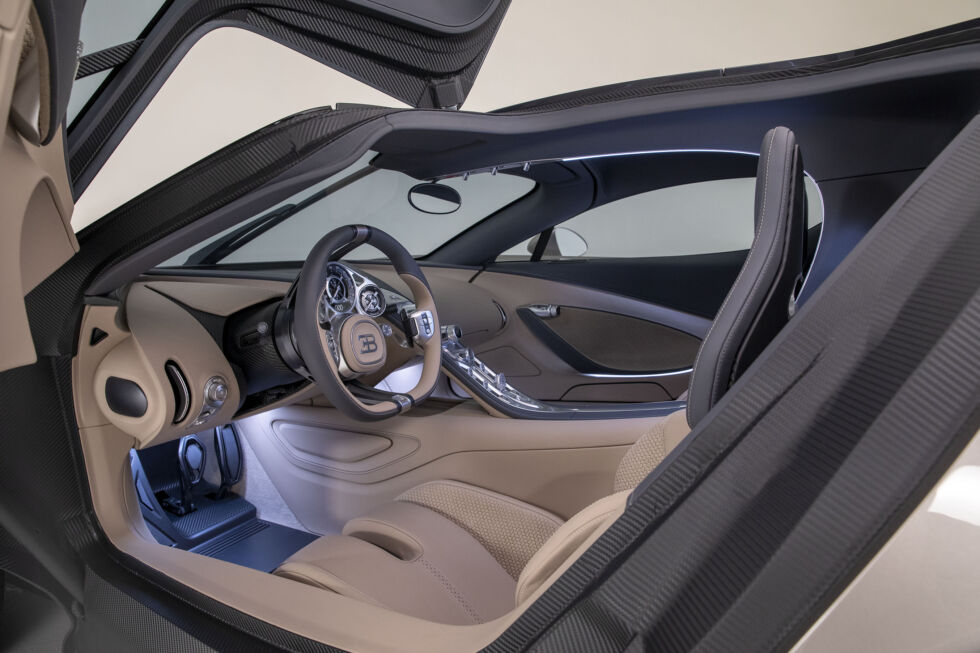
It’s a sentiment that speaks volumes about Bugatti’s approach to the Tourbillon development. This time around, the focus seems to be more about engaging the senses rather than delivering headline-grabbing stats. Still, figures like 0-186 mph (300 km/h) in less than 10 seconds and 277 mph (445 km/h) top speed make it abundantly clear that the Tourbillon will be a sensational performer.
That performance, which bests the Chiron by more than three seconds and 16 mph (26 km/h) in those metrics, respectively, is due in part to the Tourbillon’s more aerodynamic shape. During our briefing, Heyl said that designers turned to birds of prey for inspiration, influence that is particularly evident at the nose of the car, where the Tourbillon’s reduced frontal area significantly lowers aerodynamic drag. While the overall look doesn’t stray too far from the Chiron, the increased emphasis on aerodynamics—as further evidenced by elements like the massive rear diffuser and sinewy front clip—also gives the Tourbillon a more muscular, purposeful aesthetic.
ARS VIDEO
What Happens to the Developers When AI Can Code? | Ars Frontiers
W16 out, V16 in
But it should come as no surprise that the all-new powertrain is the centerpiece of the Tourbillon. Here Bugatti has ditched the Veyron and Chiron’s iconic quad-turbocharged W16 in favor of an all-new 8.3 L, 64-valve, naturally aspirated V16 that dishes out 1,000 hp (745 kW) and revs to a searing 9,000 rpm.
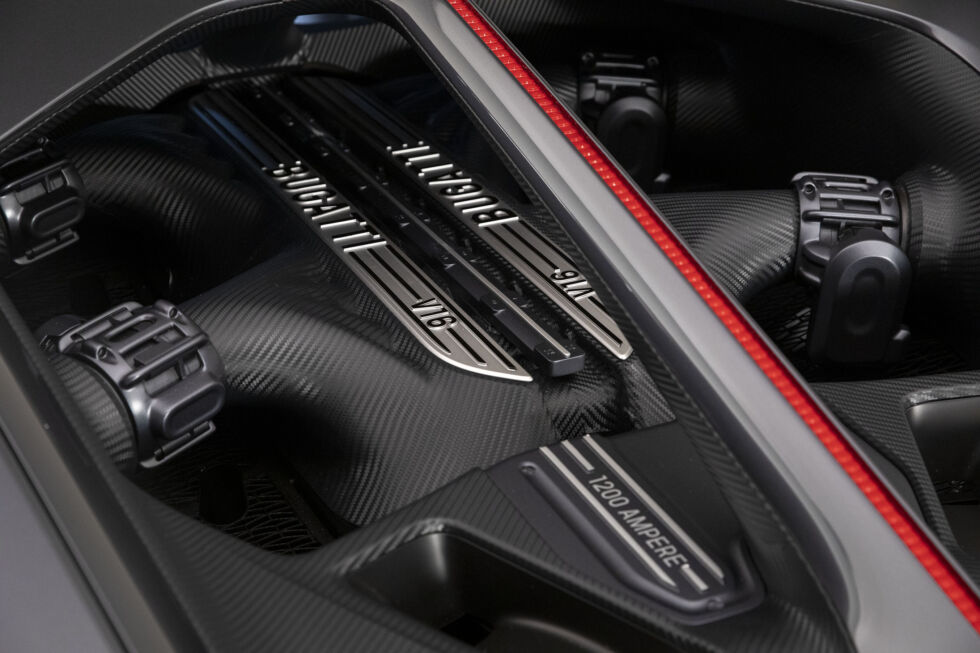
Four individual throttle bodies serve four cylinders apiece, and in its V configuration, the new engine required a crankshaft that’s more than 3 feet long (1 m). That would typically be a recipe for untenable amounts of vibration, but Heyl explained that Bugatti was able to address this potential issue through extensive computer simulation and materials testing while also leveraging the inherent benefits of the new engine’s configuration: “Since you can ignite four cylinders simultaneously, the vibrations are essentially canceled out by one another. And that allowed us to keep the counterbalancing weights to a minimum.”
A pair of motors and inverters at the front axle deliver an additional 600 hp (447 kW), while a third motor at the rear adds another 200 hp (150 kW) to the mix, bringing the Tourbillon’s grand total to 1,800 hp (1,342 kW). Molded into the Tourbillon’s carbon-fiber monocoque and submerged in oil to help maintain ideal cell temperatures, a 24.8 kWh battery provides 37 miles (60 km) of all-electric range.
“We’ve stayed true to our origins,” Heyl said in reference to the cylinder count. “I like to say that it’s the same band of 16, just regrouped in a different format. And we chose to use a naturally aspirated V16 for the emotional aspect of it as well. We probably could have reached similar power numbers using a turbocharged V8, but it wouldn’t have had the same emotional impact.”Advertisement
Horological instruments
Like its predecessors, the Tourbillon also places a strong emphasis on luxury. Inspired by premium watch design, the gauge cluster and switchgear boast materials like sapphire, titanium, and crystal glass, but there’s a conspicuous lack of digital displays in the Tourbillon’s cabin.
“Screens are what make an interior feel dated over time. If you get into a car from 10 years ago and start fiddling around with the navigation, today it’s a rather unpleasant experience,” he pointed out. “We expect these cars to be around a hundred years from now, and we don’t want to date the car by putting big screens everywhere.” Though a retractable screen does hide at the top of the center stack, all of the car’s functions are accessible without it. It’s a design philosophy that highlights the value of tactility and authenticity in an increasingly simulated world.
- Well, you can’t call a car Tourbillon without giving it horological instruments. The center hub of the wheel is fixed, and the diameter was chosen so that the instruments remain legible when it’s turned. Bradley Iger
- The instrument display weighs just 1.5 lbs (700 g) and is made of more than 600 parts. It is mostly titanium but uses ruby and sapphire jewels as bearings, similar to a watch movement. Bradley Iger
- The center console is glass and aluminum. A retractable screen hides somewhere up top. Bradley Iger
- Bugatti says it has upped its craft with the Tourbillon, inside and out. Bradley Iger
- “Yes, it is crazy to build a new V16 engine, to integrate with a new battery pack and electric motors and to have a real Swiss-made watchmaker instrument cluster and 3D-printed suspension parts and a Crystal Glass center console. But it is what Ettore would have done, and it is what makes a Bugatti incomparable and timeless. Without that kind of ambition, you might create a great hyper sports car, but you wouldn’t create an icon Pour l’éternité,” said Mate Rimac, Bugatti CEO. Bradley Iger

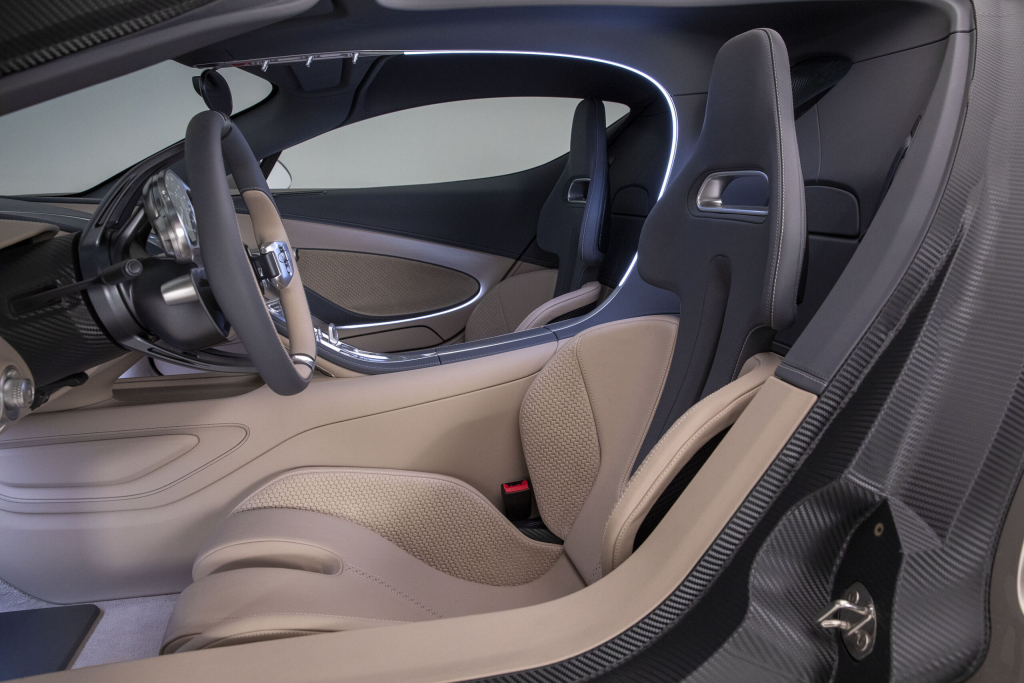
“For us, it’s about how you feel when you sit in the driver’s seat,” Heyl added. “It’s about the sensations that you get: the engine’s acoustic signature, the haptics, the smell of the leather, the way that the fixed-hub steering wheel integrates with the instrument cluster. It’s about appealing to your senses. And what better way is there to appeal to the senses than with a naturally aspirated 8.3 L V16 that revs to 9,000 rpm?”




